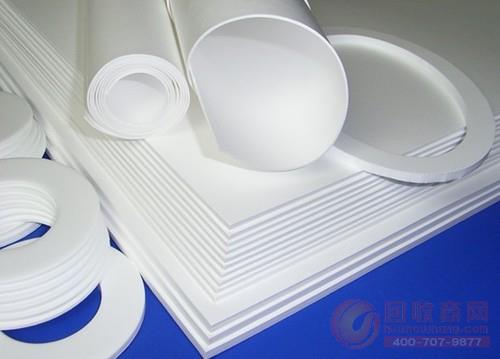
Polytetrafluoroethylene is currently the largest variety of fluoroplastics, accounting for about 60% of its total demand. It has excellent performance and is trusted by users. The application of other fluoroplastics in the fields of semiconductors, medical treatment, and wire coating is also expanding. The use of fluoroplastics can be summarized as:
1. Utilizing its chemical resistance, the application of plastics in chemical resistance has long been limited to the manufacture of seals, gaskets, and pipe fittings, and the use of stars on other parts requiring corrosion resistance (such as pipes) is increasing. With the advancement of raw materials and processing technology, the molding method of fluoroplastics has expanded the selection of the plant: if injection molding can greatly improve production efficiency, small-volume production can be used in cutting process, PTFE bonding and welding technology. The development has made it possible to manufacture large tanks and equipment linings, and the FEP powder coating process makes processing more flexible and convenient. Fluorine plastics have been used more in anti-corrosion and anti-pollution during semiconductor production.
2. In the mechanical industry, the friction coefficient of polytetrafluoroethylene is small, and its static friction coefficient is lower than the dynamic friction coefficient. It can be used in low-speed and high-load fields. For example, it can solve the problem of expansion and contraction caused by thermal expansion and vibration in structural parts such as civil engineering, chemical engineering and bridges. Specific applications are:
(1) Bearing bushings for anti-pollution machinery (such as textile, paper, pharmaceutical, food machinery);
(2) Machines that transport non-lubricating liquids such as alkalis and solvents (such as mixers, dyeing machines, pumps);
(3) Bushings working under corrosive environments such as acid and alkali (such as electroplating bath chemical equipment);
(4) Oil-free lubrication (such as oxygen production equipment);
(5) Yuan oil lubrication (such as ultra-low temperature freezer, liquid fuel pump);
(6) Sliding parts working in an environment with poor oil lubrication (adding a high temperature dryer, a furnace in the furnace, and a conveyor belt in the furnace);
(7) Sliding member (movable support) in a low speed and high load state.
3. Fluoroplastics in the electrical field are flame retardant materials. The critical oxygen index is high and corroded and can be used as an insulating layer for wires.
ETFElPvDF has high insulation resistance and dielectric strength, and its mechanical strength is also excellent. qT is used for computer and communication cable. It can be used for small cables in oil wells and nuclear reactors due to its weather resistance and radiation resistance. It can be used in communication equipment and high-frequency electric equipment due to its low dielectric constant and dielectric loss at high frequencies. Mixing PTFE with conductive materials such as carbon black and carbon fiber can be used as antistatic material and heating element material. PvDF can also be fabricated into piezoelectric components for the radio industry and instrumentation industry.
4. Non-sticky Non-sticky fluoroplastics can be used to make kitchen equipment (such as non-stick pans, snack molds), exterior wall coatings for high-rise buildings, foam molding dies, copier rolls, and the like. In addition, the use of artificial soil materials such as artificial blood vessels and heart valves, gas separation membranes, and waterproof and breathable composite fabrics are also increasingly widespread.
Stamping And Welding Part,Metal Fabrication Steel Part,Fabrication Steel Part,Steel Rectangular Tubing
JIANGSU TONGDE INTERNATIONAL TRADE CO.LTD. , https://www.tongdetrade.com